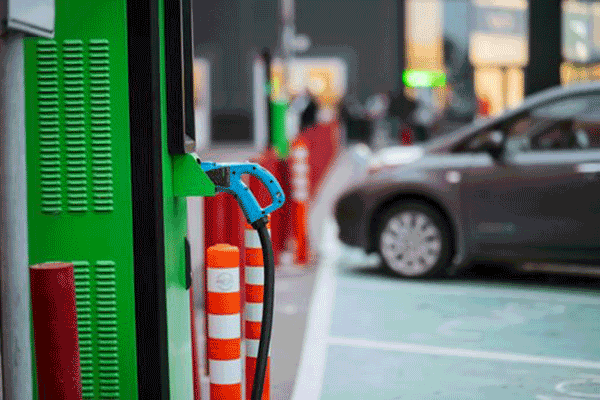As the world accelerates towards a greener future, the demand for electric vehicles is skyrocketing. This surge in EV adoption necessitates a robust and efficient charging infrastructure. However, building an EV charging site is not a straightforward task. It requires careful planning, strategic decisions, and a keen understanding of the evolving EV landscape.

Understanding the EV Charging Landscape
The first step towards building an EV charging site is understanding the landscape. The demand for EV charging points is expected to rise exponentially in the coming years. Businesses across various sectors, including real estate, hospitality, retail, and food service, are recognizing the potential revenue opportunities from these charging points. However, the installation and maintenance of EV chargers can be complex and costly. Therefore, it’s crucial to understand the fundamentals of deploying an EV charging point and identify ways to save money throughout the process.
Selecting and designing a station
You might be tempted to rush into installing a charger in your business’ parking lot or your apartment building’s parking garage, but there are many things to think about before you break ground.
- Site Power – The first thing to consider when choosing a charging site is power. DC fast charging requires a lot of power, so you’ll need a licensed electrician to confirm if the existing grid connection is suitable. If not, it may be necessary to contact your regional power provider to ensure the grid can handle the demand of your charging infrastructure. Also review your utility’s rate structure—most have different rates based on time of day and usage, and even different rates for car chargers.
- Installation Costs – As the power of the charger system grows, so too does the size of the electrical cables and switchgear required to supply it. Some systems rely on low voltage / high current cabling that can be very expensive to install. Product selection should take into account the fully installed cost.
- Footprint – How much space will your charger or chargers occupy? Make sure you have physical room to install a charger without interfering with existing parking, pedestrian traffic, etc. You want to attract EV drivers, but make sure there’s enough room to accommodate everyone.
- Traffic and Throughput – How many EVs do you expect to use your chargers? Will the chargers cause congestion? Will the chargers be easy to get to? Think about how many EV drivers may use your chargers. Again, will they block or interfere with existing traffic as they enter and exit the charging space?
- Internet Connectivity – Internet access is key for any EV charging point. You will need either a wired connection or a reliable wireless connection for payment processing. The same connection can also be used for remote diagnostics and data collection. Most chargers simply won’t work unless they can connect to payment processors or their own networks. Check with network providers to make sure your area is covered.
- Regulations – EV charge points are subject to many local and country-wide regulations. Sites need to meet a variety of safety and other standards before construction can begin. Contact your local government to learn what kinds of regulations are required in your area.
- Accessibility – Consider disabled drivers when you plan your site. The Americans with Disability Act (ADA) and European standard EN 301 549 require that charging sites adhere to certain accessibility standards. For example, charging cables and the charger’s user interface should be reachable from a wheelchair. Make sure your site meets local accessibility standards.
Product selection
After site planning, you’ll need to choose your charging hardware. You may be tempted to purchase the most affordable charger, but entry level chargers can end up costing you more over time. That cheap charger may not be able to handle tomorrow’s EVs or present more issues, and you’ll be upgrading before you know it.
When shopping for chargers, look for modularity, scalability, and upgradability. Even if you’re starting small, choose a charger or chargers that can grow to meet future demand. SETEC POWER DC fast EV Charger can be upgraded over time to deliver more power to more EVs, which means you can start small and develop your charging site over time.
Leveraging Incentives and Rebates
Various government, energy company, and non-profit incentives are available for EV charging infrastructure. These incentives, ranging from tax credits to rebates to grants, aim to expedite the transition from internal combustion cars to EVs. It’s important to research and leverage these incentives to offset the costs of building an EV charging site.
Ensuring Efficient Maintenance and Operations
Maintenance and operations are often overlooked aspects of an EV charging site. However, they can significantly impact the total cost of ownership. Regular maintenance is essential to prevent component failures and ensure the efficient operation of the chargers. Additionally, the software running the chargers requires regular updates and maintenance.
The anticipated expansion of EV charging infrastructure globally brings with it numerous economic and environmental benefits. As our world progressively embraces electrification, a multitude of resources and initiatives are at hand to aid operators in the economical establishment of DC fast-charging solutions. Opting for a proficient partner can be the optimal strategy to guarantee the maximum yield on your investment.














